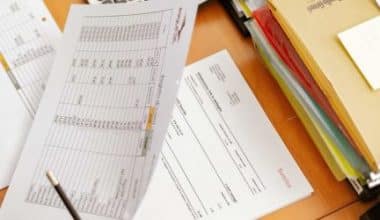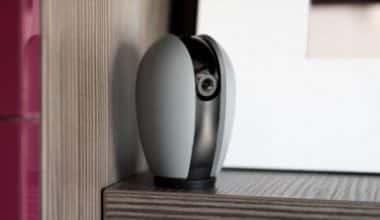One should send a follow-up email to the interviewer(s) right after the interview, another should be sent if you haven’t heard a response in a reasonable amount of time, and a third should be sent to stay in touch for networking purposes. Even if you don’t hear back from your interviewer right away, sending a simple thank-you note is a good first step. But, there are situations when weeks pass after an interview and you still don’t hear a response from a potential employer. Furthermore, sending a follow-up note or email after a job interview is more than just polite. It keeps the applicant at the forefront of the hiring manager’s mind and provides an opportunity to reiterate interest and enthusiasm for the position. So in this piece, I will guide you on how to write a follow-up email after an interview and examples.
What Is a Follow-up Email After an Interview?
A follow-up email after an interview is typically a concise email that requests more details about your position in the employment process when there’s no response after an acceptable period of time.
This could happen at any point during the job search process, from the job application stage all the way to the process that follows the interview.
Nevertheless, you can also utilize it to do more, like reiterate your interest in the position. Typically, the follow-up will just include a basic request for an update. Also, it’s acceptable to convey your gratitude for being taken into consideration, even if the recruiting manager botched the communication and hasn’t gotten back to you since meeting you.
It is true that it may seem absurd for you to be responsible for all communication. Companies should be concerned about the applicant experience, after all, considering that approximately half of all job seekers in high-demand fields have declined offers due to subpar hiring procedures.
The problem is that a breakdown in communication isn’t always a criticism of the individual involved. The recruiting manager might have gotten too busy with high-priority duties to complete the hiring process on time or it might have been delayed for causes beyond their control.
How to Write a Follow-up Email After an Interview
Several companies are constantly competing for the best employees. Whereas hiring was formerly a time-consuming process that may take weeks or months, it now takes just days, and often even hours.
A follow-up email to an interview should be sent no later than the next business day. You don’t have to hit “send” the second you exit the room (or shut your laptop), but you should get it out as quickly as possible.
Doing so will help you make a positive impression on the recruiter and maintain your name in front of their mind as they deliberate. Professionals refer to this as the “recency effect,” and a well-written email sent shortly after an interview can help you benefit from it.
In addition to the material covered in the interview, you may choose to offer the following. It may be a link to a website, a sample of previous work, or additional details about a current project. In any case, the sooner you send it, the better it will be received.
Of course, there are situations where the 24-hour rule wouldn’t apply. If the person conducting the interview is already a personal or professional connection, sending a follow-up email might be out of line. Perhaps they told you not to contact them while they were on vacation, or they specifically requested you not to.
While sending and responding to a follow-up email, use your common sense. Here are tips and examples on how to write a follow-up email after an interview:
#1. Start Your Email ( Make Use of the Subject Line)
Your email’s subject line is the first thing the receiver will see, and it might play a role in determining when they open it. If you and the person responsible for responding to your interview questions through email have already been in touch, it is usually most efficient to continue the conversation by responding to the most recent email exchange.
The subject line of a new message you are producing should be tailored to the individual recipient and entice them to click through and read the body. This could be a thank-you note and mention of the interview that followed a job interview. It’s best to mirror the level of formality and seriousness of your interview in your correspondence.
For instance, you may use the subject lines “It was great speaking with you today,” “Thank you for taking the time to interview with me” or “It was great to meet you today.”
#2. Adorn With a Proper Greeting
Start your letter off right by using the receiver’s name. It is appropriate to use a person’s first name if you have been using it in previous correspondence or throughout the interview. In the absence of a personal relationship or when in doubt, however, it is appropriate to use the person’s last name.
For instance, good greetings include “Dear Anna,” A personal letter to “Dear Mr. Smith” or “Dear Ms. Jones”
#3. Write the Email’s Body Text (Explain Why You’re Writing to Them)
It is important to keep the main text of a follow-up email very brief and direct to the point. Start off by expressing your gratitude to the interviewer for their time and then remind them of the date and time the interview took place.
Example: “I wanted to thank you for taking the time to interview me this morning. It was a joy speaking with you and learning more about the [position for which you applied] job.”
#4. Explain Why You Want the Job Again
Reiterate your enthusiasm for the role and refer back to specifics from the interview that you feel were particularly well received. Explain how your background, skills, and interests are a perfect fit for the organization and the role you’re applying for.
Example: “Please tell me more about [insert something interesting you learn about the firm or the position during the interview]. I’m happy about the opportunity to [explain why you’d be an asset to the company or how your background and interests mesh with those of the position and the business].”
#5. Create a Concluding Paragraph
Conclude with a brief paragraph explaining what comes next and asking if more information is needed from you (unless this was already addressed during the interview). It would be appropriate to state that the requested materials have been sent, provided, or attached to this email if they were mentioned during the interview.
Example: “Let me know what I can do to help, and if there is anything more I can do in the meanwhile before we move forward. In any case, I hope to hear from you soon.”
#6. Put an End to Your Email (Put Your Signature on It)
Include your name and contact information, as well as a formal or semiformal concluding line depending on the tone of your past correspondence with the recipient. Whereas “Sincerely” and “Respectfully” are considered formal, “Best” and “Regards” are more informal.
Good wishes, [Your Name], [Your Contact Info]
In addition, make sure there are no spelling or grammar mistakes in your email before hitting send.
What Are 2 Examples of How You Can Follow Up After an Interview?
If you haven’t heard back from a potential employer after an interview, don’t assume that they didn’t like you or are ignoring you. Keep in mind that they may have interviewed tens, or even hundreds, of people for just one open post. Even though there is just one person following up, each interviewer may have as many as ten persons to contact. Here are 2 examples of how you can follow-up email on an interview:
#1. An Initial Interview to Express Gratitude
Sending a thank-you note to the interviewer within two to four days after meeting them is standard practice.
It’s true that every company is unique. There may just be a single interview phase for some companies. Certain companies, like BetterUp, may conduct multiple interviews.
Whatever the case may be, it’s always appropriate to send a “thank you” email after meeting with a prospective interviewer. Imagine that Clara has just finished a phone interview with a recruiter for a marketing position. She’d be happy to join the team after discussing future steps with them.
During the phone interview, she found out that her skills were a wonderful fit for the position. In addition, she gained insight into the company’s culture and future prospects. Clara, ready for the next step in the process following her phone interview, decides to send a thank you follow-up email.
#2. You’re Holding Your Breath, Wondering if You’ll Advance to the Following Round
This response is not going to make you happy. Yet, if you are waiting to hear if you have advanced to the next round of interviews, you will need to exercise some patience. This is a very annoying situation to be in.
However, if there are a large number of applicants, the process may take longer than expected.
Consider your own background first. The time spent communicating through email and sometimes a phone call to arrange times. The calls you make to recruiters before an interview to talk through the people you’ll be meeting with. Attempting to coordinate schedules so that everyone can be there at the correct moments. Amount of potential interviewees you’ve had so far.
Take that amount and multiply it by the total number of applicants for the position. And on the side of the recruiter, that number should be increased by the number of possible job openings.
Let’s assume Ben’s first interview went well with the recruiter and the boss. The headhunter had initially informed him that there would be three stages of interviews. Finally, you’ll have a conversation with the team’s vice president. Just two days have passed since Ben interviewed with the hiring manager.
He’s already sent a thank-you email after the interview, so he decides to wait patiently for news on the next round. His mentor advises him to give it a week before reaching out again.
If you haven’t heard from them in 7-10 days, it’s Acceptable to send a follow-up email. Requesting interview feedback is also an option. Yet, try to be as patient as possible. Don’t give up! I believe in you.
Read Also: 6 Common Work Email Mistakes and How to Avoid Them
How Long Should You Wait After an Interview to Follow Up?
After an interview, it is appropriate to send a follow-up thank-you email to the interviewer. Sending a thank-you email after an interview is a fantastic way to demonstrate your interest in the position, underline your strengths, and bring up any important points you may have forgotten to bring up in person.
Then, the only thing to do is wait. Waiting 10 to 14 days is generally seen as the minimum acceptable time frame before following up. Sometimes, the interviewer will get back to you after a few weeks. If you call too frequently, you may come across as needy or demanding. Worst yet, if you contact them too soon afterward, it may appear as though you don’t trust them to get the task done effectively.
Is It Appropriate to Send a Follow-up Email After a Job Interview?
Sending a follow-up email is one of the most important tools in the job search process. It is important to write a thank-you email within one to two business days of an interview to prevent giving the impression that you were impolite. And then, 14 days after that, assuming you haven’t been given specific instructions to the contrary, you should send another one so that you remain at the forefront of your employer’s mind.
Example of Inappropriate Interview Follow-Up
Following up properly after a job interview will reinforce the impression you made. On the other hand, if you follow up in the incorrect way, you could end up costing yourself the job. As an example, here is how not to act after a job interview.
#1. Make Up a Story About a Better Deal
When you get a job offer from company B, you should definitely get in touch with the hiring manager, but you shouldn’t contact company A until you have a written offer in hand. If you’ve been given a verbal offer, you might be tempted to make contact, but doing so could be dangerous. Why? You face the danger of hearing, “Congratulations and good luck on the new job,” from Company A if you simply have a soft employment offer (such as a verbal one) or no job offer at all. And if the verbal offer doesn’t pan out, or if you never had a competitive offer, to begin with, you’ll be out of luck finding any kind of employment.
#2. Extraordinary Frequency of Contact
There are several ways to follow up after an interview, but it’s important not to pester the person with too many emails. When corresponding with someone, it’s best to stick to one method of communication at a time. For instance, if you send someone an email, you shouldn’t leave a voicemail (to let them know you sent an email), then contact them on LinkedIn, and then tweet at them.
Sending a lot of messages can make you seem desperate, and employers aren’t looking for it.
#3. Careful Follow-Ups
Maintaining a healthy balance is essential for effective post-interview follow-up. You should make contact with the interviewer in such a way that it is clear you are interested in the position, but that you don’t come across as desperate. Showing enthusiasm for the position and not overwhelming the recruiting manager can be accomplished by reaching out once or twice with a nice, optimistic query.
#4. Ditch the Follow-Up
While it’s best not to harass a potential employer with constant follow-up emails after a job interview, you shouldn’t do so, either. One interpretation of this strategy is that it shows you care about getting the job but aren’t “too” interested in it. But, the recruiting manager will interpret this as a sign that you aren’t enthusiastic about the position.
Follow-Up Email After Interview No Response
Nothing is more disheartening than acing an interview and hearing nothing further as a candidate. The fact that you haven’t heard back from the recruiting manager despite your repeated attempts is unpleasant, but it’s not surprising given that 60 percent of people in your position have felt the same way.
To your relief, you might be able to do something about it. If you haven’t heard anything back, don’t give up hope; a well-written email asking for an update never hurt anyone.
Here’s everything you need to know about sending a follow-up email after the initial one has no response. Let’s discuss what makes up a follow-up email with no response, then we’ll go into several examples. In most cases, the email message will contain a:
- Subject Line
- Individual Greetings
- Update Request
- Reaffirmation of Interest
- Make a request for additional details
- Thank You
- Professional Sign-Off
Errors to Avoid When Writing Follow-up Emails After No Response
It is helpful to be aware of the most typical blunders people make when writing a follow-up email after receiving no response after an interview and how to circumvent them. It’s crucial that you avoid social faux pas whenever possible because even the smallest of them can have devastating effects.
- Follow-up emails are notoriously difficult to get right, especially when it comes to tone. You don’t want to appear needy, but you also don’t want to sound demanding or forceful. To succeed, focus on presenting yourself in a professional and succinct manner.
- If you must use a subject line, make sure it is crystal clear and gets right to the topic. To put it mildly, if you waste the recruiting manager’s time with a lengthy subject line and a verbose message, you won’t make a good impression.
- Furthermore, it is impolite to send an email without at least one “thank you” phrase. Even if you’re upset because you haven’t heard back yet, it’s important to blend in some expressions of gratitude.
Examples of Follow-Up Emails After No Response
Alright, now it’s time for some follow-up email after the interview with no response examples. In case you ever find yourself at a loss for words when it comes time to pen a note, here are a few suggestions to get you started.
#1. Very Concise and Delightful
Subj: Update About Your Interview for the [Job Title]
Email:
Hello Mrs. Mary Brian.
I just wanted to check in and see if anything had changed since my interview for the [Job Title] back on [interview date]. I am glad to have the chance to pursue this and eagerly await information on the next steps. Please let me know if there is anything else I can do for you, and I’ll be happy to help. You have my gratitude for taking this into account.
Sincerely,
[Input Your Name Here and Your Contact Details Here]
Therefore, it doesn’t have to be difficult to write a follow-up email after an interview with no response. Make use of the above advice to craft a short, message that will offer you a fighting chance of eliciting the information you require.
But don’t get over away and hit submit too soon. By choosing the right moment, you can maintain a positive image even as you make your request. And that’s the crux of the issue.
Conclusion
It’s not a simple task to find employment. The process of applying for jobs, going through interviews, and making a final selection can be draining. Depression is a common side effect of seeking employment. Treat yourself with kindness and compassion as you go.
But, a fantastic new work opportunity may be right around the horizon for you. It might be nerve-wracking to reach out to a potential employer again after an interview. It’s possible you’re unsure of the best way to maintain contact with the interviewees. You may worry that you’re taking up too much of the interviewer’s time.
Nonetheless, after reading this, you should feel prepared to confidently contact the company after the interview. If you make a good impression, you may make it easier for them to hire you.
FAQs
How many times should you follow-up after an interview?
Follow up with a shorter email to remind the interviewer if you don’t hear back after the first time. However, if you don’t hear back within a week, don’t worry; a single follow-up email generally does the trick.
Is two weeks too long after an interview?
Yes, you should follow up two weeks after an interview. The Human Resources office is a maze where applications and interview notes might go into oblivion. Never forget that your boss is a person, too, with a life and a schedule of their own.
Similar Articles
- Email Tracking: 7 Best Email Tracking Tools
- Concept Testing Methods: Overview & Real-life Examples
- EXIT INTERVIEW: Tips for Conducting an Exit Interview (+Example questions)
- INTERVIEW QUESTIONS TO ASK CANDIDATES.
- INTRODUCTION EMAIL SAMPLE: Best Way to Start & End






